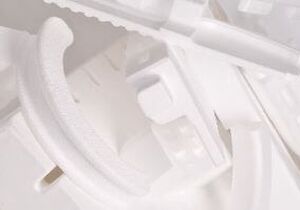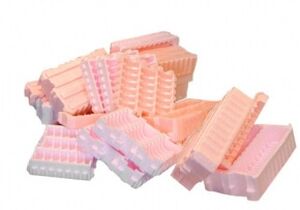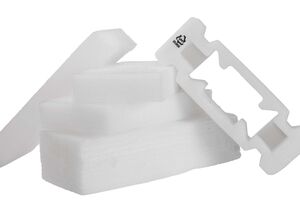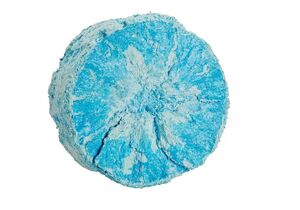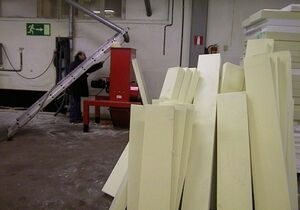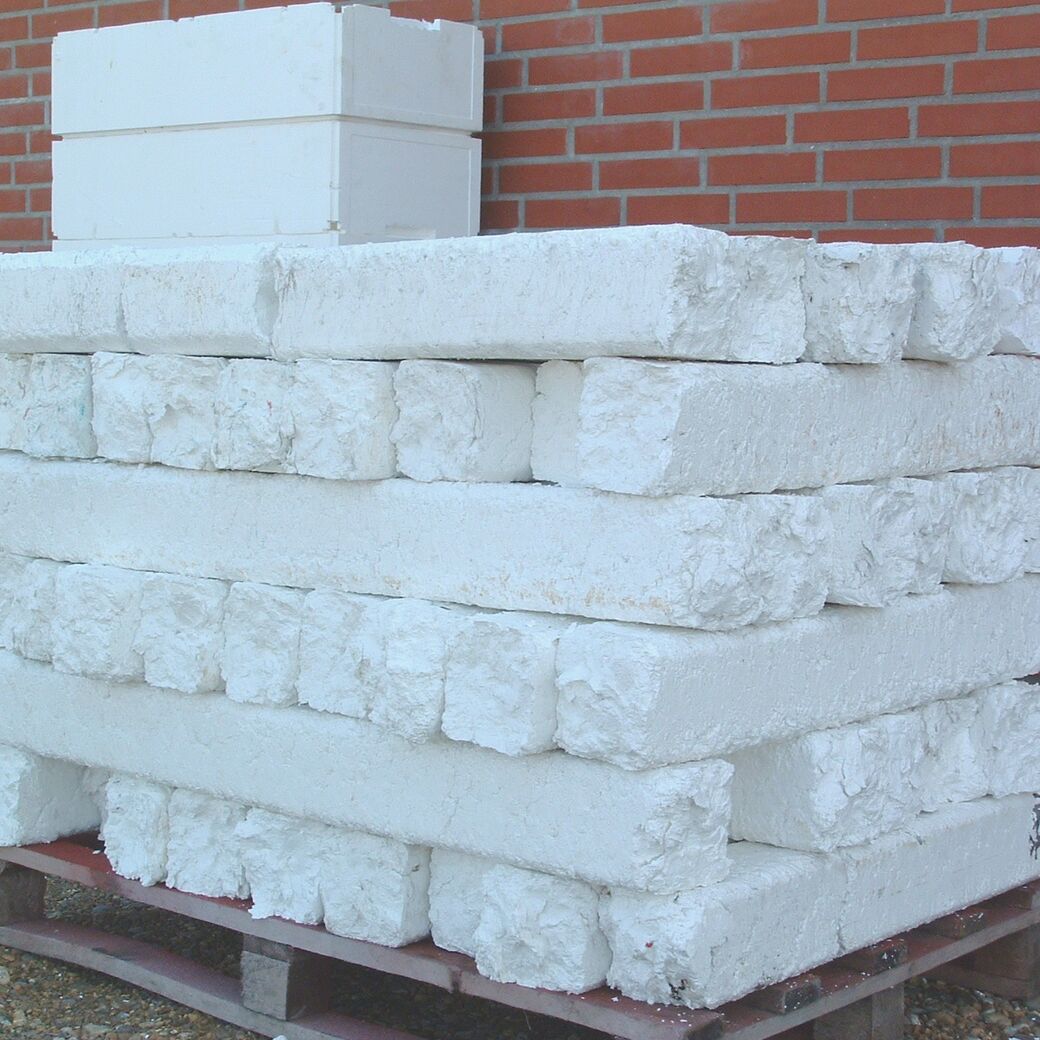
The RUNI Foam Compactor Turns Your Waste into Value
The RUNI Screw Compactor is a versatile solution initially designed for compacting EPS fish boxes in the fishing industry. Over time, it has proven to be an efficient foam compactor for various plastic materials beyond styrofoam.
Our compaction machines find applications across diverse industries, including construction, fishing, and waste handling. RUNI's expertise extends to handling materials such as EPS, EPP, EPE, XPS, and PUR. The compaction process not only saves space and facilitates efficient warehouse and waste management but also contributes to environmental protection. By compacting different types of foam, companies can turn what would otherwise be considered waste into a valuable resource. Instead of incurring significant expenses for disposal, businesses can now create a marketable product from their foam waste. The compacted blocks have quite a high value, and many companies worldwide are interested in buying these compacted blocks for recycling.
Choose recycling machinery from RUNI to get reliable solutions that benefit your business and the environment. With our various foam densifiers such as SK120, SK200, SK200Twin, SK240, SK370 and silo system, we are well-equipped to assist in managing your waste.
The RUNI Foam Compactor Turns Your Waste into Value
The RUNI Screw Compactor is a versatile solution initially designed for compacting EPS fish boxes in the fishing industry. Over time, it has proven to be an efficient foam compactor for various plastic materials beyond styrofoam.
Our compaction machines find applications across diverse industries, including construction, fishing, and waste handling. RUNI's expertise extends to handling materials such as EPS, EPP, EPE, XPS, and PUR. The compaction process not only saves space and facilitates efficient warehouse and waste management but also contributes to environmental protection. By compacting different types of foam, companies can turn what would otherwise be considered waste into a valuable resource. Instead of incurring significant expenses for disposal, businesses can now create a marketable product from their foam waste. The compacted blocks have quite a high value, and many companies worldwide are interested in buying these compacted blocks for recycling.
Choose recycling machinery from RUNI to get reliable solutions that benefit your business and the environment. With our various foam densifiers such as SK120, SK200, SK200Twin, SK240, SK370 and silo system, we are well-equipped to assist in managing your waste.
The purpose of a screw compactor
What is a screw compactor?
A screw compactor, also known as a auger compactor or a foam densifier, is designed to reduce the volume of foam materials such as EPS, EPE, EPP, PUR, or XPS. Screw compactors play a crucial role in recycling efforts by compressing bulky foam materials into more manageable and compact forms. The foam is fed into the compactor, and the air (and/or gas) is squeezed out. The outcome for most foams is a stackable block with high density that is easy to transport and store.
How does a screw compactor work?
First, a crusher chews up the foam blocks into smaller pieces, which are then fed into the screw house. The spiralling motion of the screw or auger forces the foam to move through a funnel inside of which it is squeezed , forcing the air out. Heat of friction helps softening the material, reducing the amount of force required for compaction. Out of the machine emerges densified, heavy blocks of EPS that are easily manageable and cost-effective to store and transport.
EPS and plastic foam is used across industries and builds up large amounts of waste
EPS and other types of plastic foam are widely used across many industries due to its numerous qualities (lightweight, shock-absorbing, heat/cold protecting, durable, etc.) From insulating houses in the construction industry to protecting vegetables or fish in the food industry and protecting both medicine and tests within the medical industry, among others.
Despite its popularity, EPS (Expanded Polystyrene) is not always recycled. Maybe due to low awareness of its 100% recyclability or the challenges in storing and handling this bulky material. Consequently, EPS waste often ends up in incineration plants or landfills, posing environmental concerns as it doesn't naturally degrade and occupies significant space without much weight.
How the RUNI auger compactor recycles loose foam products
When dealing with foam waste, the initial step is to estimate the quantity of the waste material you accumulate. RUNI can then assist you in determining the optimal machine size and setup tailored to your business needs, capacity requirements, and workflow preferences.
Once the foam compactor is installed, whenever your company is collecting waste foam material, like e.g. waste EPS or EPS fish boxes, you can simply feed them into the compactor. The resulting compacted blocks can be easily stacked on a pallet for convenient storage and transportation. This method reduces the space occupied to just a 50th of the original waste EPS until you are ready to sell the pallets with the compacted material.
What to consider when choosing a screw compactor
The most important considerations when deciding on a foam densifier are the type of waste foam material, quantities that need compacting, and specific needs for the densifier to be built into an existing line/building.
We are always at your disposal to consider these critical points and to help design the best solution for your specific needs.
An example is an electronic store with used EPS from the products they sell, unpack, or install at their customers' homes. It totals around 20 tonnes a year, and they have a pallet rack in the corner of their warehouse, next to the EPS collection point, which is a perfect place for their screw compactor solution.
With this information, we would recommend the RUNI SK200 compactor, which would match the company's needs. They can place it inside the pallet rack to ensure it doesn't take up much space in the warehouse. Then, they can simply throw the EPS waste in the machine every time they have some and stack the blocks that come out of the compactor.
Learn more about the benefits of the RUNI styrofoam densifiers
The RUNI styrofoam densifiers come in many different sizes, and it can be adapted and fitted to your plant or warehouse.
The foam compactors from RUNI do not apply heat - and they use very little electricity in general. The smallest model compacts 18 kg/hour and the largest up to 200 kg/hour.
Contact us
If you need more information or have questions about RUNI products, please fill out the form below. We will get back to you as soon as possible.
Read more about our privacy and cookie policy.


Contact US Office
+1 (630) 422-3172
runi-us@runirecycling.com
351 Country Club Drive,
Bensenville, IL 60106



